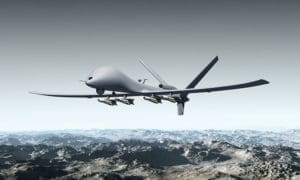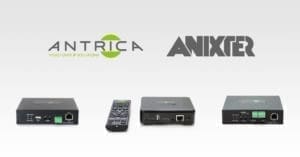In our latest post, Carly Litwin, the Marketing Manager of Antrica sits down for the first time to explain how to choose a suitable encoder or decoder for your requirements. She covers a number of key questions, so if you are stuck choosing, consider having a look at this.
[Transcript]
When it comes to deciding on video encoders, it usually helps to follow a bit of a process, in terms of going through like a selection order, and the first thing we tend to talk to people about is selecting which kind of input type they need for the video encoder so is that HDMI? Is that HD SDI? And that tends to narrow down the choice in terms of the product that they’re looking for.
The next thing that we tend to ask, as well, is in relation to ‘What kind of resolution are you trying to maintain?’ because a lot of people need to stick to a particular resolution whether that’s SD, HD or anywhere up to 4K, and so that varies and again, the product selection kind of gets narrower the further you go down this.
Another thing which predominantly is important in the security sector is whether the encoder needs to be fully ONVIF compliant or not, and some of the products we have are partially ONVIF. Still, then we have a particular range which are fully ONVIF profile S&G compliant, which for integration purposes for things like video management, software and the security industry is very important because they support particular protocols which you can control the encoder through that, so that’s quite important.
In terms of sort of things further from that there are things like audio quality that you need to consider as well, so what kind of audio do you need? Do you need that to be a particular quality? Because security cameras, for example, it’s very important to obviously be able to see what’s going on, but the audio plays a big part in that as well so you know that can be sort of one of those key factors.
Then you start drilling down more into the in-depth stuff like are there very specific requirements that you have in terms of low latency? And being one of the other key elements, really a lot of our clients you know need a low latency encoder because they need to have a minimal lag between, you know, sending the image and therefore displaying it glass-to-glass at the other end. Another factor, just as a peripheral, there are things like form factor, or like in UAV modules that we supply, you know, the operating temperature range so that’s when you sort of get to, in the more specifics, but if you tend to follow that kind of key structure you will end up with the right product.
On the flip side of that obviously, the encoder is sending the video and the decoder is receiving the video, so in a flipped-about kind of way, you have to take into consideration the output as opposed to the input with an encoder.
So, majoritively, we tend to find HDMI is one of the most important, or the key kind of connections because most monitors, and you know, screens have HDMI connections these days, and then there are things like HD SDI and all of those things.
The other thing to consider which is big, a big factor in terms of decoders is how you want to be able to view those video streams. So, in a lot of cases with decoders, the viewing options are very important in terms of deciding on the product. So, do you just need to see one image on the screen or do you need to see multiple images? Or how do you want to be able to control that – if it’s just simply a view only or whether you need to be able to have some kind of control back to the actual source of that video. And that then leads on to, you know, do you need your decoder to be fully ONVIF compliant, or does it need to have serial data control, you know, and those the ONVIF and the serial data allow you to control either the camera or the encoder at the other end of it, back at the encoder source, so through that, it’s kind of quite an important part in deciding which decoder to go for.
And then again, we go down into a sort of more of you know, ‘Do you need it to be low latency?’ and if it is low latency, you know, the decoder element is probably the most important part, in terms of deciding on your low latency sort of coupling, and so if that is the case, then we have specific products that we recommend to work together to achieve that low latency. Then again, it all boils down to the form factor. How big do you need it? How small do you need it? Does it need to be a miniature version to work in an a drone-based application, or is it you know, does it need to operate within a certain temperature? All of those kinds of little smaller things come further down the line.




